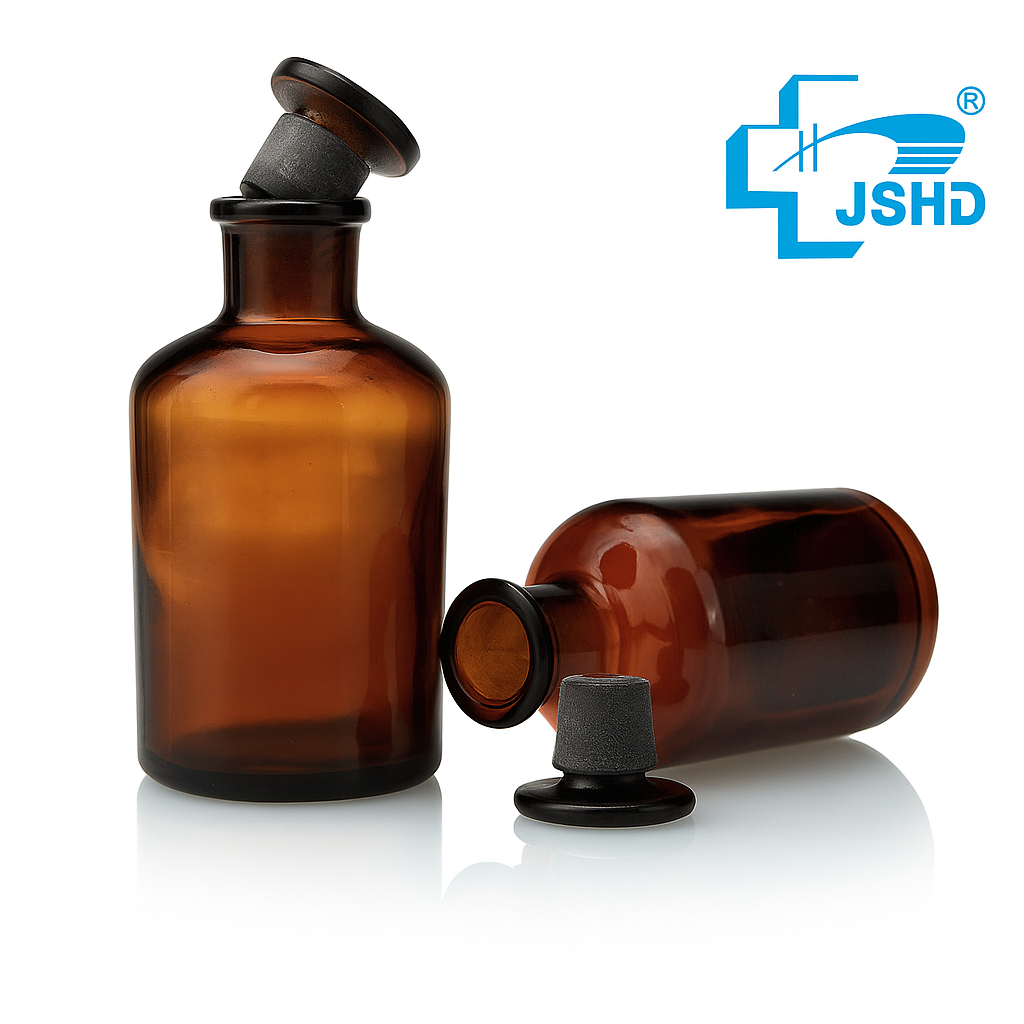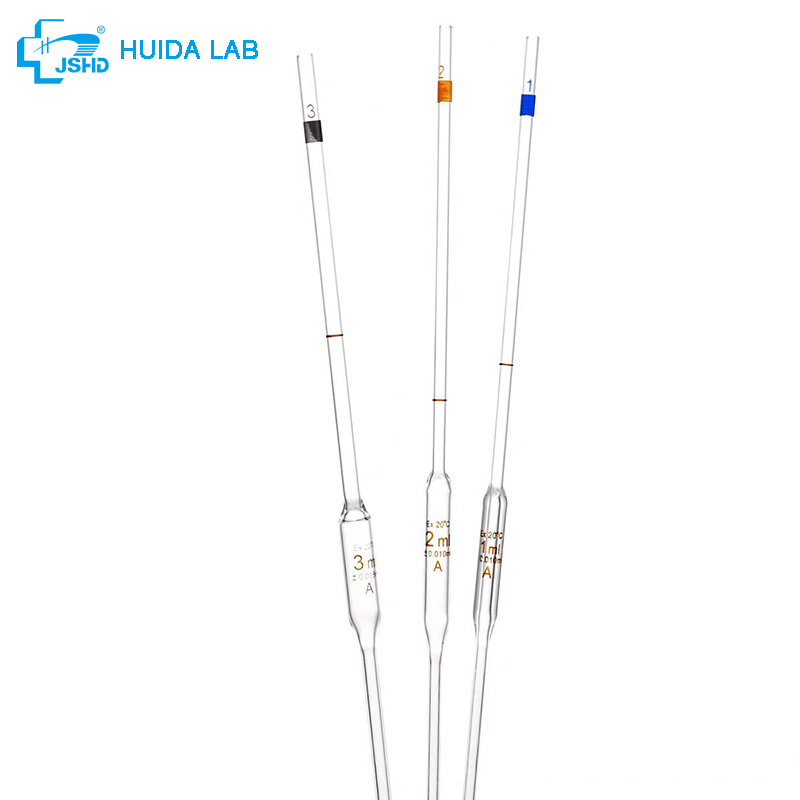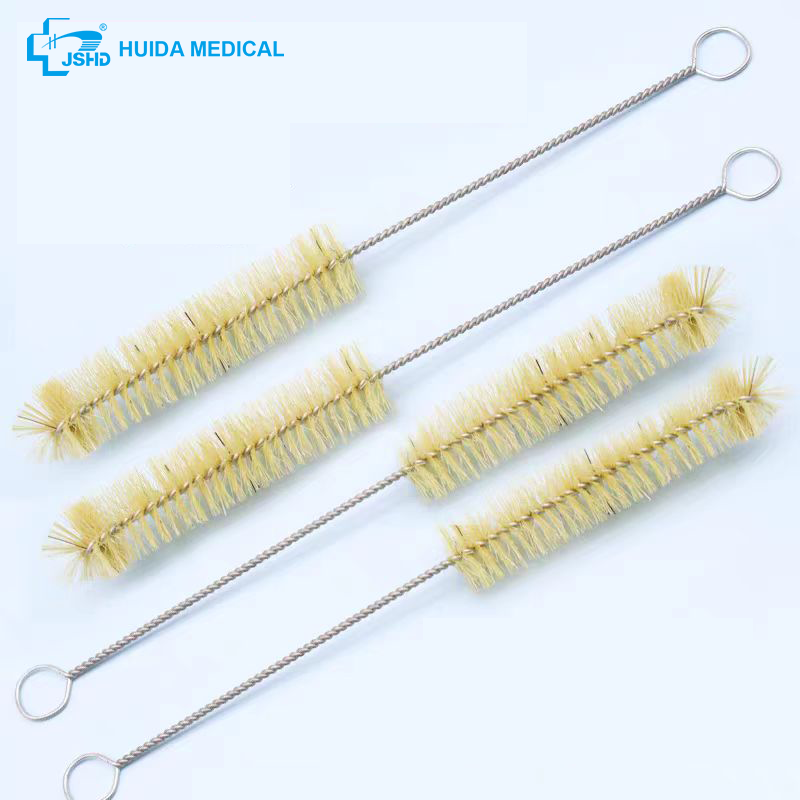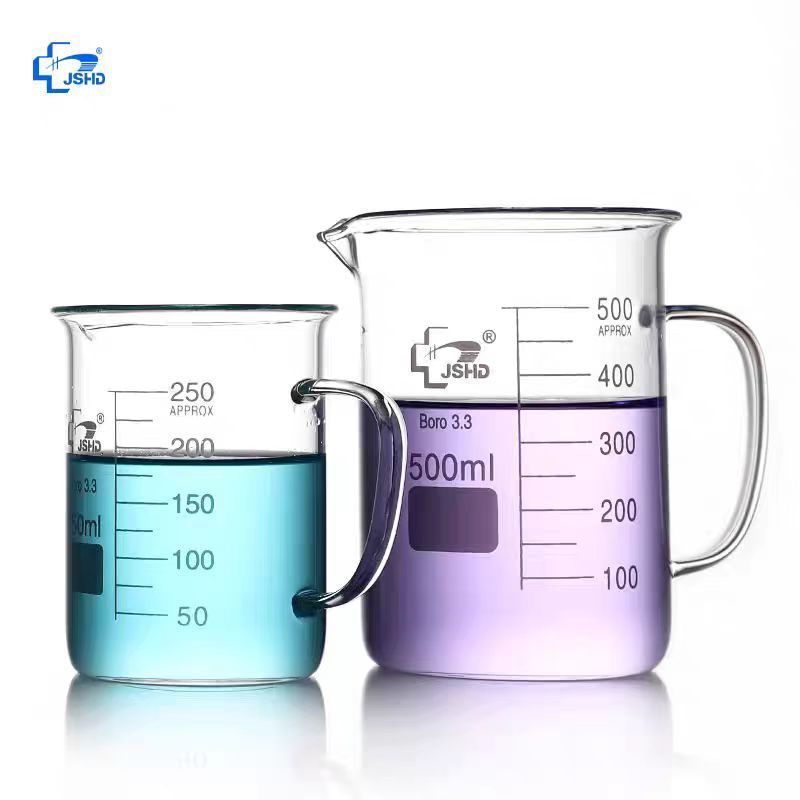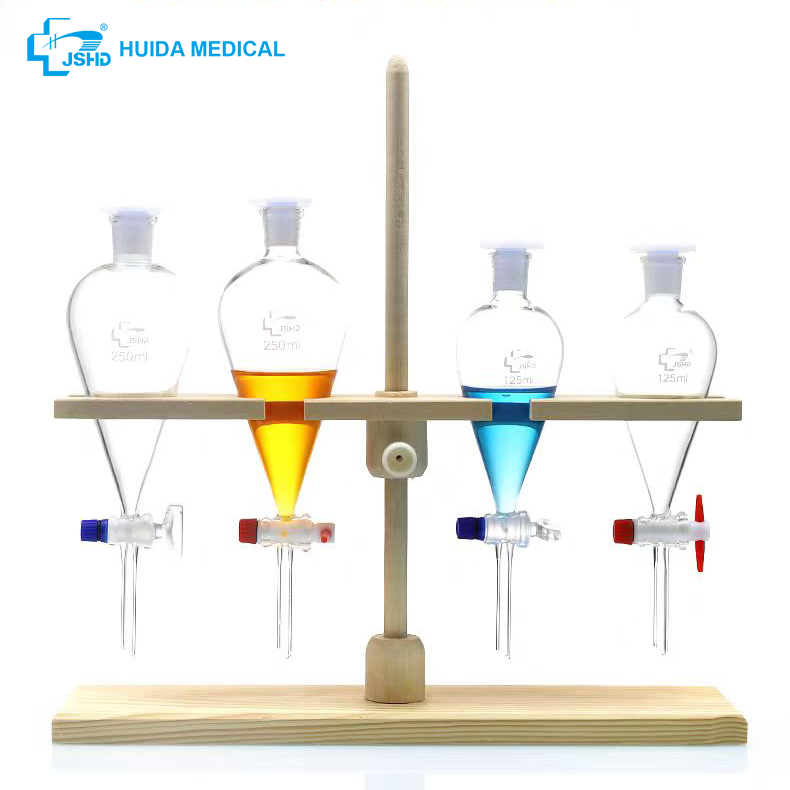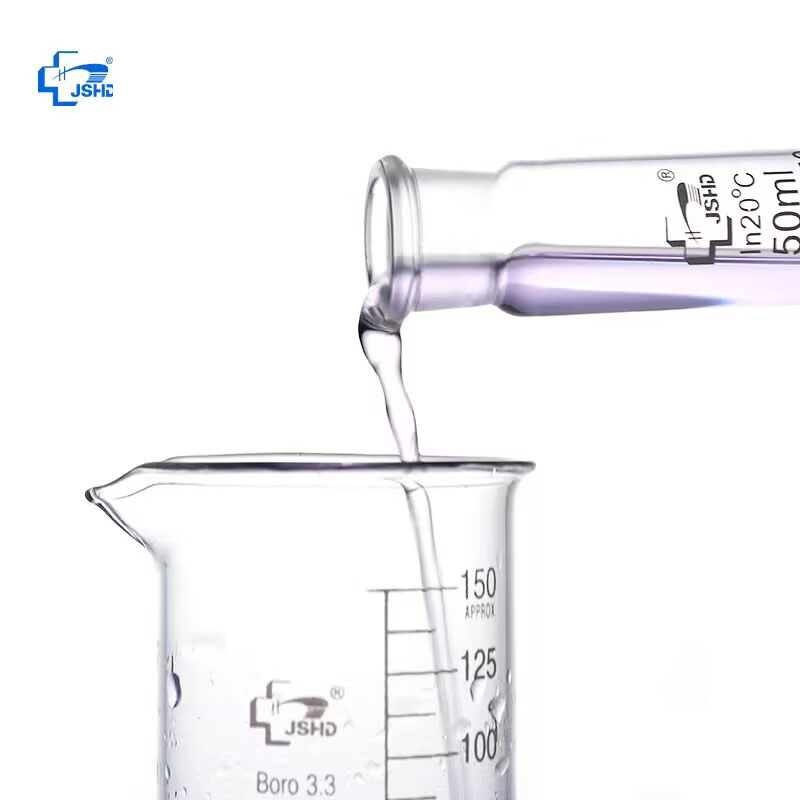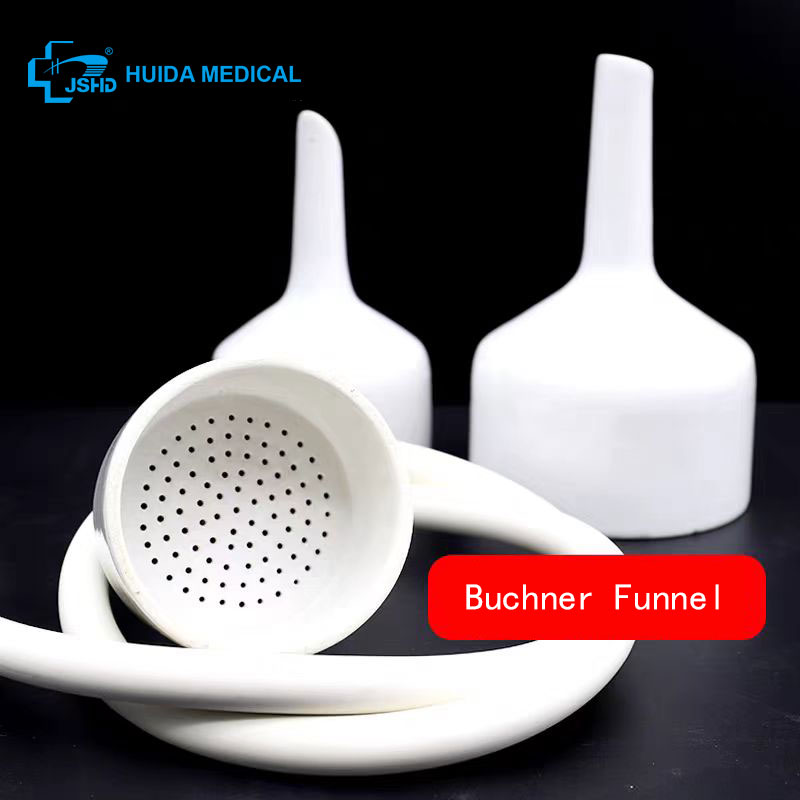Welcome To Huida
Glass Reagent Bottle
Glass Reagent Bottle – Amber Narrow Mouth Reagent Bottle with Ground-in Stopper
Why Every Lab Needs a Reliable Glass Reagent Bottle
Imagine this: you’ve just finished preparing a sensitive chemical solution after hours of painstaking work. The last thing you want is for that solution to break down because of light exposure or to lose volume because of evaporation. The glass reagent bottle is the safety net you didn’t know you needed.
This seemingly simple piece of glassware works silently behind the scenes in chemistry, biology, and pharmaceutical labs. Its amber glass, narrow neck, and ground-in stopper lock light out and moisture in, so the reagents, culture media, or solvents you’ve painstakingly prepped stay stable, whether you’re storing them for days, weeks, or years.
Comprehensive Description of Glass Reagent Bottle
A glass reagent bottle is a laboratory container built specifically for safeguarding liquid chemicals and sensitive reagents. Made from sturdy amber borosilicate glass, it blocks harmful UV and visible light, protecting solutions like silver nitrate or culture media from photodegradation. The narrow neck minimizes the surface area exposed to air, and the ground-in stopper creates an airtight seal, reducing the risk of contamination and evaporation. When you seal the bottle, you’re not just closing a container—you’re locking in purity and performance.
The slim mouth at the top minimizes how much air gets inside the bottle, which cuts the chance of loss through evaporation, the risk of spills, and the chance of contamination. Depending on whether you expect long-term storage or just daily use, you can choose a solid, ground-in glass stopper that’ll seal the bottle for months or a lighter plastic cap that lets you grab the bottle with one hand while the other is working in the lab.
All of these thoughtful details come together in a bottle that looks simple on the outside but is anything but.
Why Choose a Reagent Bottle?
We put together this list of features that clearly separates a reagent bottle from any lab bottle on the shelves:
Amber glass shield – Keeps sunlight from breaking down light-sensitive liquids.
Leak-proof closure – A narrow top paired with a glass seal shuts out all air.
Chemical toughness – Base, acid, and organic solvent lovers can all work inside.
Built-to-last glass – Thick walls and a reinforced neck say “try again later” to daily abuse.
Choice of sizes – Grab one that holds 30 ml for a small reagent or 10,000 ml for a weekly bulk delivery.
Two cap styles – Pick a glass cap for storage and a plastic one for everyday pouring.
Overall, while basic storage bottles do the job for some, reagent bottles create a safer, longer-lasting home for the sensitive reagents and complicated culture media that need a reliable shield.
This extensive range guarantees that whether you're stashing tiny samples in 30 ml vials or pantry-sized 10,000 ml volumes, the perfect container is always at hand.
Practical Uses of the Reagent Bottle in Liquid Storage
A media bottle goes beyond being a simple jar for liquids. It’s a keeper of quality. Here’s how it demonstrates value every day:
Chemical storage. Safeguards acids, bases, and solvents without leaching or reacting.
Microbiology labs. Preserves prepared culture media, stopping contamination in its tracks.
Pharmaceutical research. Shields sensitive reagents to ensure stability throughout drug testing.
Educational labs. Excellent for teaching labs doing dilution experiments.
Clinical labs. Guards diagnostic reagents that need protection from light.
Real-life benefit: A microbiology group that switched from clear to amber bottles for agar noticed less contamination and a marked extension in shelf life.
Bottom line: Sure, polymer bottles save weight and a few bucks, but glass reagent bottles are still the benchmark if you want peace of mind over the coming years.
Picking the Right Size Reagent Bottle
Small sizes (30 to 125 ml). Best for rare reagents that you use sparingly or for tiny sample storage.
Medium sizes (250 to 1,000 ml). The workhorses for daily lab solutions and carrying volumes.
Large sizes (2,500 to 10,000 ml). The answer for bulk chemical storage and extended shelf life.
Pro tip: 10–15% Headspace Needed!
Always leave 10–15% headspace inside the reagent bottle. This small gap is essential because liquids expand when stored, and the space prevents spills and glass breakage.
Keeping Your Glass Reagent Bottle in Tip-Top Shape
Clean Right! After each use, wash with mild detergent and rinse with distilled water. This prevents reagent buildup and keeps the glass clear.
No Thermal Shock. Never move the bottle directly from the fridge to a hot water bath. Sudden temperature changes can cause the glass to crack.
Dust-Free Storage. Keep bottles in a cupboard or guard with plenty of breathing space. Fit the stopper loosely to stop dust from settling while preventing the stopper from sticking.
Light Protection. If your liquid is light-sensitive (like some organic compounds), store it in a dark amber bottle, not a clear one. The wrong bottle can ruin your reagent.
Why Jiangsu Huida Glass Reagent Bottles Rule
Since 2003, Jiangsu Huida Medical Instruments has made lab glassware for customers in Europe, the USA, and Southeast Asia. With nearly 50,000 m² of workshops and over 50 patents, Huida is a name labs trust.
Every Huida glass reagent bottle is made under ISO, CE, and FDA rules. Small vials for test tubes, 10-liter jugs for factories: Huida bottles offer same-day performance, same-day strength, and same-day price.
Choose Huida for glassware that works, works, and keeps working—and comes with 24/7 support worldwide.
FAQs About Glass Reagent Bottles
Q1: Why should I choose an amber glass reagent bottle?
A1: Amber glass blocks UV and some visible light, keeping light-sensitive chemicals safe and helping them last longer.
Q2: Can I sterilize these bottles in an autoclave?
A2: Absolutely. Borosilicate amber glass reagent bottles hold up well in a standard autoclave cycle, so they stay safe and clean.
Q3: What’s the difference between glass and plastic stoppers?
A3: Glass stoppers are ground in for a nearly airtight seal, perfect for long-term storage. Plastic stoppers are lighter and still seal well, making them handy for everyday use.
Products categories
WHY CHOOSE US
Since its establishment, our factory has been developing first world
class products with adhering the principle
of quality first. Our products have gained excellent reputation in the industry and
valuabletrusty among new and old customers..

